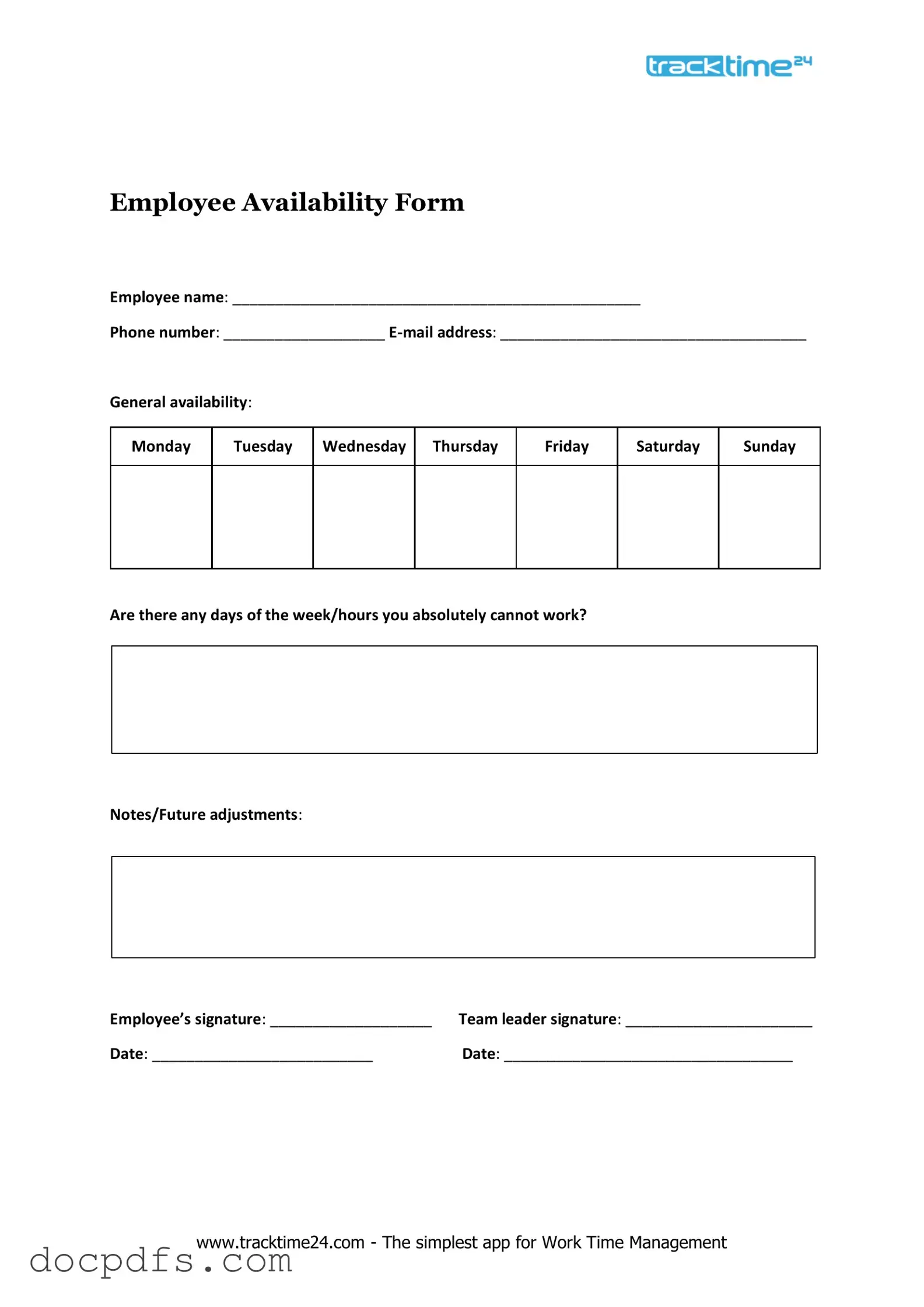The Employee Availability form is designed to gather information about when employees are available to work. This helps employers schedule shifts effectively, ensuring that staffing needs are met while accommodating employees' personal commitments. By collecting this information, companies can create a more balanced work environment that respects individual availability.
All employees, whether full-time, part-time, or temporary, should complete the Employee Availability form. This includes new hires as well as existing employees who may have changes in their schedules or availability. By having everyone participate, employers can maintain an accurate understanding of workforce availability.
How often should I update my availability?
Employees should update their availability whenever there is a significant change in their schedule. This could include changes due to personal commitments, school schedules, or other job responsibilities. Regular updates ensure that employers have the most accurate information, which can lead to better scheduling and reduced conflicts.
The Employee Availability form usually requests the following information:
-
Your name and employee ID
-
Days of the week you are available to work
-
Preferred working hours
-
Any specific days or times you are unavailable
-
Any additional notes regarding your availability
This information allows employers to create a work schedule that aligns with both the needs of the business and the preferences of the employees.
Yes, employees can often indicate specific shift preferences or request certain days off directly on the form. This is an important aspect of the form, as it allows employees to communicate their needs clearly. However, it is essential to understand that while employers will consider these requests, they may not always be able to accommodate them due to operational requirements.
What should I do if I forget to submit my availability?
If you forget to submit your availability, it is best to reach out to your supervisor or the HR department as soon as possible. They can provide guidance on how to submit your information late and may be able to accommodate your needs for the upcoming schedule. Prompt communication is key to resolving any scheduling issues that may arise from late submissions.
